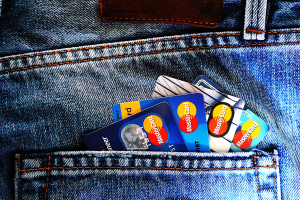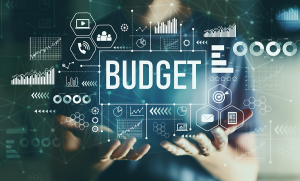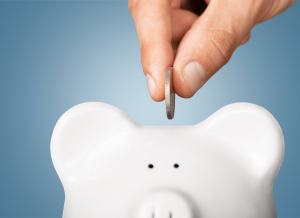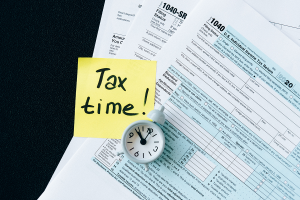7 Financial Topics to Master—Or Be Manipulated By

What’s a 609 Dispute Letter in Credit Repair & Does It Work?
08/25/2022
How Does a Late Payment Impact Your Credit Score?
09/15/2022 Money is the most influential element that we run into in our daily lives. It either empowers us or hinders us, depending on how much control we have over the money in our lives. We can use it recklessly or with purpose. But regardless, we use it—or at least think about it—every day.
Money is the most influential element that we run into in our daily lives. It either empowers us or hinders us, depending on how much control we have over the money in our lives. We can use it recklessly or with purpose. But regardless, we use it—or at least think about it—every day.
Money has the power to control you if you let it. And that’s never a good thing. But if you master the seven basic financial topics of budgeting, debt, credit, savings, investing, taxes, and insurance, you’ll be able to control your money—instead of the other way around.
#7 Budgeting
Let’s talk about the dreaded word, “budgeting.” Budgeting can seem scary to people who haven’t budgeted before, or people who have tried a budget but have failed to budget successfully. But I promise it’s not. Budgeting shouldn’t be looked at as a diet, but rather as a conversation between you and your money.
Budgeting starts with hammering down your emotions about money and then figuring out how to move forward. It can be tough. I hated budgeting when I first started, but now it’s second nature to me.
Tracking Your Spending
The first thing that you need to do when you’re learning to budget is to track your spending. Tracking your spending is keeping a money diary and writing down every purchase you make—both purchases in cash and those on a card.
This process helps you see where your money is going. Are you spending too much on fast food? Are you not budgeting enough for gas? Questions like these are answered when you track your spending.
A note about tracking your spending: it’s really easy to judge yourself for spending too much or not enough in certain areas. I’d check those emotions at the door. The goal of this is to figure out where your money is going. From there, you can build a budget around what you’re actually spending and leave the money shame behind.
The 50/30/20 Method
There are plenty of different budgeting methods, but this one is my favorite. 50% of your expenses go to what you need, 30% go to what you want, and 20% go to your savings or debt.
I love it because it allows me to budget for things that I want—like travel—without feeling guilty or worrying that I’m not saving enough.
The Money Envelope Method
If you don’t have enough money to do the 50/30/20 method, you can always use the envelope method. This method requires a cash diet. You’ll take out your monthly bills and put them in different envelopes. And then budget the rest of your money the same way. Once the envelope is empty, you’re out of cash for the month. It’s a great way to track your spending and see how you’re doing financially.
What Happens When Ends Just Don’t Meet
Sometimes, budgeting can’t account for everything. And that’s okay. If you’ve pared down all your expenses, it might be time to look at government support. Things like food stamps can help a lot if you qualify. Each state is different, so you’ll want to look up how to qualify and what you need to get your benefits. Reaching out to your local library to get this information is a great way to start. Some libraries even have social workers who are trained to help guide communities and get underprivileged families the resources they need.
Also, don’t shame yourself. Wages haven’t increased in almost two decades, and companies aren’t paying for increased productivity. It might not be your fault that you’re not making ends meet. Plenty of lower- and middle-class families are fighting to ensure their families have what they need to survive. You’re not alone in your struggle.
#6 Debt
I used to think that debt is shameful, but I’ve realized that it’s not. So let’s check shame at the door during this conversation. You’re here because you want to learn how to be better with money. It doesn’t matter if you have a few thousand dollars in debt, or considerably more—you want to better yourself, and for that I congratulate you.
What Is Debt?
Debt is money that you owe other people. Common types of debt are medical debt, car notes, mortgages, and credit card debt. But debt could also include payday loans and other predatory loans.
You get into debt because you don’t have the money to afford a purchase. Not all debt is bad—debt that you can leverage is considered good debt. That’s things like your mortgage, student loans (to an extent), and car loan. You can use these types of debt to make more money than if you hadn’t taken them on.
But bad debt can get you into real trouble. Especially if you’re in a predatory loan cycle. It’s hard to get out of those types of situations because the loans are designed to be circular. Borrow until payday, can’t pay it back, borrow until payday again. All while building a higher and higher pile of debt.
How to Be Responsible With Debt
There is a way to be responsible with debt, even debt that you took on while you didn’t know much about money. The most responsible thing to do with debt is to pay it off. Some debt, like high-interest debt, you’ll want to pay off quickly. While other debt, like student loans or mortgages, you may want to pay off slower. It just depends on your interest rates.
First, calculate how much debt you have. Take a deep breath. This is the scariest part of this exercise.
Next, write out each payment. You’ll want to see how much you’re paying towards debt each month.
Third, look back up at your budget. Do you have any extra money you can throw towards debt? If you do, choose the debt with the highest interest rate and put it toward that. Even $20 or $30 a month makes a difference. It could shave months, or years, off of your debt.
Fourth, snowball that debt! When you have one loan paid off, add that payment to the next loan. Keep doing this until all your loans are paid off.
Fifth, celebrate that you’re debt free. Throw a party. Go out for drinks. Ride a pony. Whatever floats your boat, it’s important you celebrate.
Strategies to Get Out of Debt if You Can’t Afford Your Payments
If you’re overwhelmed with debt, there are ways that you can pare it down.
- Consolidate your debt. Consolidating debt allows you to bring it all into one manageable payment. You work with a loan company, and they essentially buy out your debt and then you pay them. It’s great if you’re struggling to make multiple payments. You can extend the personal loan so that you can afford the payments. Often times you can even get a lower interest rate than your high-interest debt.
- Work with your lenders. Lenders just want to be paid. Reach out to them. See if you can get reduced payments. Reduced payments will help you decrease the burden of your debt so you can start making some headway. It’s not the best option, but lenders really only want the money back in their pockets.
- Settle your debt. Settling your debt allows you to pay less than what you owe. Settle directly with your lenders. Credit reduction companies exist, but they’re risky to use and you might wind up in a worse-off position than when you started. Settling with your lenders allows you to shave debt off of your account, but it also closes it. Only do this if you’re ready to close the account.
#5 Credit
Credit is a tricky subject in personal finance. It’s hard to build it and easy to break it. And the system is rigged against poorer individuals. But there are things you can do to build your credit.
What Are Credit Scores?
Credit scores represent your creditworthiness. According to Experian, one of the three credit reporting agencies, your credit scores are determined by several different factors:
- Types of credit
- Age of credit
- Credit utilization
- Payment history
- New credit
If you have a good mix of credit that’s fairly old, keep your credit utilization low, don’t apply for too much new credit, and make on-time payments, you’ll have good credit.
How to Build Credit From Scratch
Part of the problem that low-income individuals have is that they may be what’s called credit invisible. When you’re credit invisible, you have no credit score. And building credit for the first time can be difficult. Thankfully, there are ways to address this problem. So how do you build credit?
1. Apply for a secured credit card.
Secured credit cards allow you to deposit a certain amount of cash that goes toward your credit limit. Pay off your card on time every month and build credit that way. Some cards offer to give you the security deposit back after a period of on-time, in-full payments. Look into the terms and conditions of all cards before applying though to make sure you’re not missing anything in the fine print.
2. Have your bills reported to the credit reporting agencies.
If you have a purchase coming up, consider putting it on credit and then paying it off. You’ll be able to show that you can make on-time, in-full payments.
In addition, alternative data programs such as Experian Boost may allow you to add some of the bills you already pay to your credit report to give your credit score a boost.
3. Become an authorized user.
Authorized users get attached to a credit card of someone else, and that card can show up on your credit report. Only become an authorized user on someone’s account that you trust, because it could come back to bite you if they don’t make on-time payments.
4. Monitor your credit closely.
Throughout all of this, monitor your credit closely. If there’s a mistake on your credit report with any of the three agencies, file a dispute. You can get the error removed and this could improve your score as well.
#4 Savings
Saving is probably one of the most important parts of building a secure financial stronghold, but it is arguably one of the hardest. Currently, only 40% of Americans can withstand a $400 emergency. That statistic, instead of shaming you if you’re part of the 60% who can’t, points to how difficult it is to save money. Car repairs come up, or you find out you’re pregnant, or your HVAC goes out. And bam, your savings are wiped out.
Some people can use those situations to be very defeatist. “I can’t save because every time I do something happens.” If this is you, I want to challenge you to change that thinking. “I’m so glad I saved because I had money for this emergency.”
Emergency Funds
The first line of defense with your savings account is to build up an emergency fund. A fully stocked emergency fund has six months to a year of savings in it. That to a lot of people (including me) seems insurmountable. If that’s you too, you don’t have to start with such a lofty goal.
Instead, aim for something smaller. When I first built my emergency fund, I aimed for $100. It took me three months to save—because I wasn’t used to saving yet, and it was hard to say no to myself and put money in savings. But as my savings grew, it became easier to save. The next $100 only took two months. Now I put away $150 a month for savings. It’s not a lot, but over time, it’ll get me to my $20,000 savings goal. Even if it takes a few years.
Gamify your savings until you increase it to something sustainable, and then ride it out from there.
Short-term Savings
Short-term savings are my favorite kind of savings. They’re your adventure savings, your college savings, or any kind of savings that’s shorter than five years. I save for trips and things like that. It’s great. I keep my short-term savings in a different savings account than my emergency fund. And I usually draw a thermometer like they do for school fundraisers and color in my progress.
What’s really cool about short-term goals is that you can use different accounts to supercharge your savings. Consider money market accounts, certificates of deposit, or high-yield savings accounts to earn interest on your money.
Long-term Savings
Your long-term savings are anything that takes longer than five years to save for. Think of a new car or a house down payment. The reason that we separate short- and long-term savings is because you store these in different accounts.
Long-term savings are best stored in investment accounts to get market gains over the years. As it approaches the date, you’ll start investing less in stocks and more in bonds to decrease volatility.
Not sure what investing is? Let’s talk about it!
#3 Investing
Investing is taking your money and multiplying it by putting it in the stock market or other investments. At first, it might seem like investing is impossible—but it’s not. You just need to do a little leg work to get started.
Open an Account
An investment account can either be an employer-sponsored 401(k) or a similar plan or a brokerage account.
Ask your employer if they offer a 401(k). Even some fast food places, like Starbucks, McDonald’s, and Taco Bell are starting to offer retirement plans.
If they don’t, you can go to a brokerage company like Fidelity or Vanguard and open a retirement account or brokerage fund.
Robo-advisors
When I first started investing, opening a brokerage account was too intensive for me. So I started with a robo-advisor. Robo-advisors are apps that will invest your money for you so that you don’t have to think about it.
They often charge monthly fees, but they’re an easy way to get your money invested in the market.
Finding Money to Invest
After you’ve opened the account, decide how much you want to spend on investing. Even contributing just $5-$20 a month will build up to thousands of dollars over time.
I suggest something similar with savings. Turn it into a game. Every time you work a shift, move $5 into investing. Robo-advisors are great for doing this because their apps are very user-friendly. But you can do that with a standard investment brokerage account as well.
The Effects of Investing
But why is investing important? Good question. Investing allows you to get returns on your money. Returns are the amount of money that grows in the market.
If you invest $100 a year with a 7% annual return, you’ll earn $7 that first year. The second year, you’ll put in another $100, which will grow to $107. But, the $107 you already have in your account will also grow by 7 percent. So you now have $221.49.
This math is called compound interest. In two years, you’ve earned $21.49 in free money. How crazy is that?
The more that you invest, the higher your monetary returns are going to be.
Bull and Bear Markets
A word of caution though, about bull and bear markets. Bull markets are good years, and bear markets are bad years.
Not every year is going to give you amazing returns. Some years you might see smaller or no returns. Keep your money invested. Losses are only hypothetical losses until you sell.
As long as you buy and hold, you’ll be able to weather the investment storms.
#2 Taxes
Taxes are what the government collects. Everyone pays taxes, except those who are tax-exempt. Tax-exempt people make less than $12,400 a year if you’re single filing status in 2021. This number can change every year, so check with the IRS to see if you’re eligible.
Otherwise, you’re going to have to pay taxes. Taxes can be tricky and overwhelming, especially if you’ve done any 1099 work like driving for Uber or Lyft. You’ll need to set aside 30% of your 1099 income for taxes. If you work for a W2 job, your employer will set aside your taxes for you.
How Do You File Your Taxes?
Filing your taxes can be a chore. But there are several options. You can pay an accountant to do it, which is pricey but you’ll get the best return. You can use an online software, which is less expensive but you might miss out on key returns. Or you can do them yourself by hand if you have very simple taxes.
The IRS even has a place on its website to file your taxes for free. You’ll receive guided help in 2023 if you make less than $73,000.
What to Do With Your Tax Refund
Tax refunds are some of the best ways to jump-start your financial future. Instead of using them for a new couch or bedroom set, you can invest in ETFs or mutual funds. You can pay off consumer debt. You can stock up your emergency fund.
Think of your tax refund as a way to supercharge your financial year, instead of as a way to enhance your life in material ways. You don’t need that leather sofa with phone chargers. It’s okay to pass up on a grandiose vacation idea to set yourself up for your financial future.
What Happens if You Owe the IRS Money
Sometimes it happens. You didn’t calculate your taxes correctly and you owe the IRS money. Instead of panicking, look at your different options.
The first thing you’re going to want to do is to change the withholding on your work forms. Talk to HR about how to do this properly.
Next, you’re going to want to pay your taxes. If you can pay all at once, pay at the IRS website. If you can’t, set up a payment plan. What you don’t want is the IRS coming after you for the money you owe.
The IRS can garner your wages if you owe them enough money. It’s better just to work it out now than to “forget” about it and deal with the consequences down the line.
#1 Insurance
Insurance is a product that you pay for that insures you for specific amounts. There are insurances for all kinds of things. Home/renters, auto, life, and health insurance are the most common insurances. They protect you against calamity.
Home and Renters Insurance
You need home or renters insurance. A lot of rental units won’t allow you without it, and home insurance protects your home against large damages.
Rental insurance protects your stuff in case of theft, damage to the property, fires, and other such horrific life experiences. Some rental insurance even allows you to insure specific items. Like my cameras and my computer are insured specifically, since I use them for work.
Home insurance is similar to rental insurance, but you can also use it on repairs for the home. You’ll want to read the fine print though, because some things like flood damage or tornado damage might not be covered if you live in certain areas. Instead, you’ll have to purchase additional insurance.
While it might seem laborious to go through all that work, you’ll definitely want to ensure that your home is protected on all fronts.
Auto Insurance
In some states, auto insurance is required for people to be driving on the road. There are a variety of different coverages you could get with your auto insurance, and each comes with different pros and cons.
Full coverage is the most expensive, but it means that you and your car will be completely taken care of in case of an accident. If you’re leasing or paying off your car, this is the coverage you’re required to have.
Collision only means that the other person’s car will be taken care of, but yours won’t be. If your car is paid off, and you have enough in savings to pay for a new car, this isn’t a bad option.
Life Insurance
Life insurance helps take care of your family after you die. It’s fairly inexpensive, depending on how young and healthy you are, and is used to take care of things like funeral expenses, missed pay from your job, and things like that.
Bundling Insurance
Different insurance companies approach this differently, but you might want to ask your insurance company if they bundle insurance. Bundling means putting several different insurance packages together for cheaper overall rates.
When I bundled my renters, auto, and personal property, my payment actually went down instead of up.
If your current insurance company doesn’t bundle, it might be worth it to look around and see who’s offering what.
Health Insurance
Health insurance is another key factor when you’re planning out your finances. It’s usually paid for, in part, by your employer—but if it’s not, you can still get it on the marketplace exchange. It’ll be more expensive, but definitely worth the cost to have yourself protected against calamity.
Medicaid
If you cannot afford your healthcare, you should look into Medicaid. Medicaid is an assistance program for low-income individuals. You can go to doctor’s visits and ensure you’re getting taken care of for little to no cost to you.
Medicare
Medicare is available for the disabled and the elderly, but it isn’t free. Many seniors find themselves in predicaments where they’re unable to pay their medical bills.
When you’re planning on retirement, you should add these calculations into your budget, so you’re not surprised.
So Now What?
It all comes down to how you prepare yourself. You can choose to live life reactively, where you don’t learn the seven financial topics. Or you can choose to embrace them, implement them into your life, and prepare yourself for the future.
The choice is yours.








